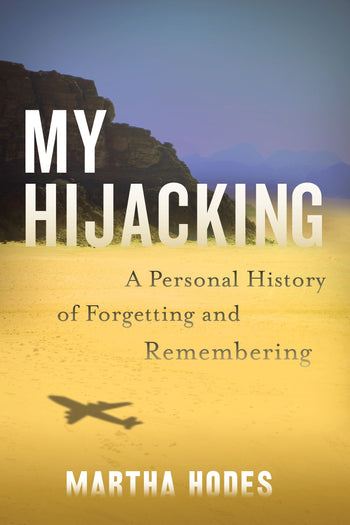And what about more significant memories, more meaningful incidents: happenings of greater personal trauma and historical import than any that I ever experienced? What happens to a person, to a child, and to their memories, when they are swept up in the maelstrom of real human events, the hinges on which history and politics creak and turn? Are they necessarily spared the haze and uncertainty that we all experience when trying to remember our own lives? And, if not, can they reconstruct their own past, using the tools of history and journalism, in a way that recreates the immediacy, the sense, of personal memory? Or are these investigatory tools, however sophisticated, however sharply honed, mere approximations? Can we teach ourselves to remember something we forgot?
These are questions that the historian Martha Hodes sets out to answer in her new book, My Hijacking: A Personal History of Forgetting and Remembering. It is an extraordinary task, in part because the hijacking in question was—is—such an extraordinary event. In 1970, when she was 12, Hodes and her older sister, Catherine, were en route home from a summer spent visiting their mother in Israel. After stops in Athens and Frankfurt, their plane was hijacked by the Popular Front for the Liberation of Palestine, or PFLP, one of four simultaneous hijackings on September 6 of that year, and diverted to the Jordanian desert, where Martha and Catherine and the other passengers and crew of the flight were held hostage for a week, as various nations and factions tried to secure their release. It was one of the most spectacular and indelible acts of terrorism in an era awash with spectacular acts of political violence by state and nonstate actors alike. But as an adult, Hodes found that it had hardly left an impression on her at all.
This event—an extraordinary and dramatic political act, a terrifying and surely deeply traumatizing experience—seemed not simply to have dimmed with the passage of decades but to have swiftly evaporated from Hodes’s memory, even as a child. In part, she speculates, this was the outcome of living in an era with no counselors, no debriefings, no processing of the trauma, and with more primitive ideas about harm and resilience: a seeming desire among parents, among teachers, to allow the sisters to draw a curtain on the awful experience and move on with their lives, as if the incident could “entirely disappear.” But there was media and academic attention; both girls gave subsequent comments and interviews, and so it is puzzling—to Hodes most of all—that although she became a somewhat nervous (but by no means infrequent) flyer, the experience largely just went away, lost like so many other hazy experiences in the churn of childhood.
It was only decades later, after 9/11—another spectacular act of political violence that Hodes also recalls experiencing in a daze—with its obvious echoes of earlier airline terrorism, that Hodes began to find herself reflecting with more frequency on the events of that prior September in 1970. Still, it was several years before she brought it up to her sister.
